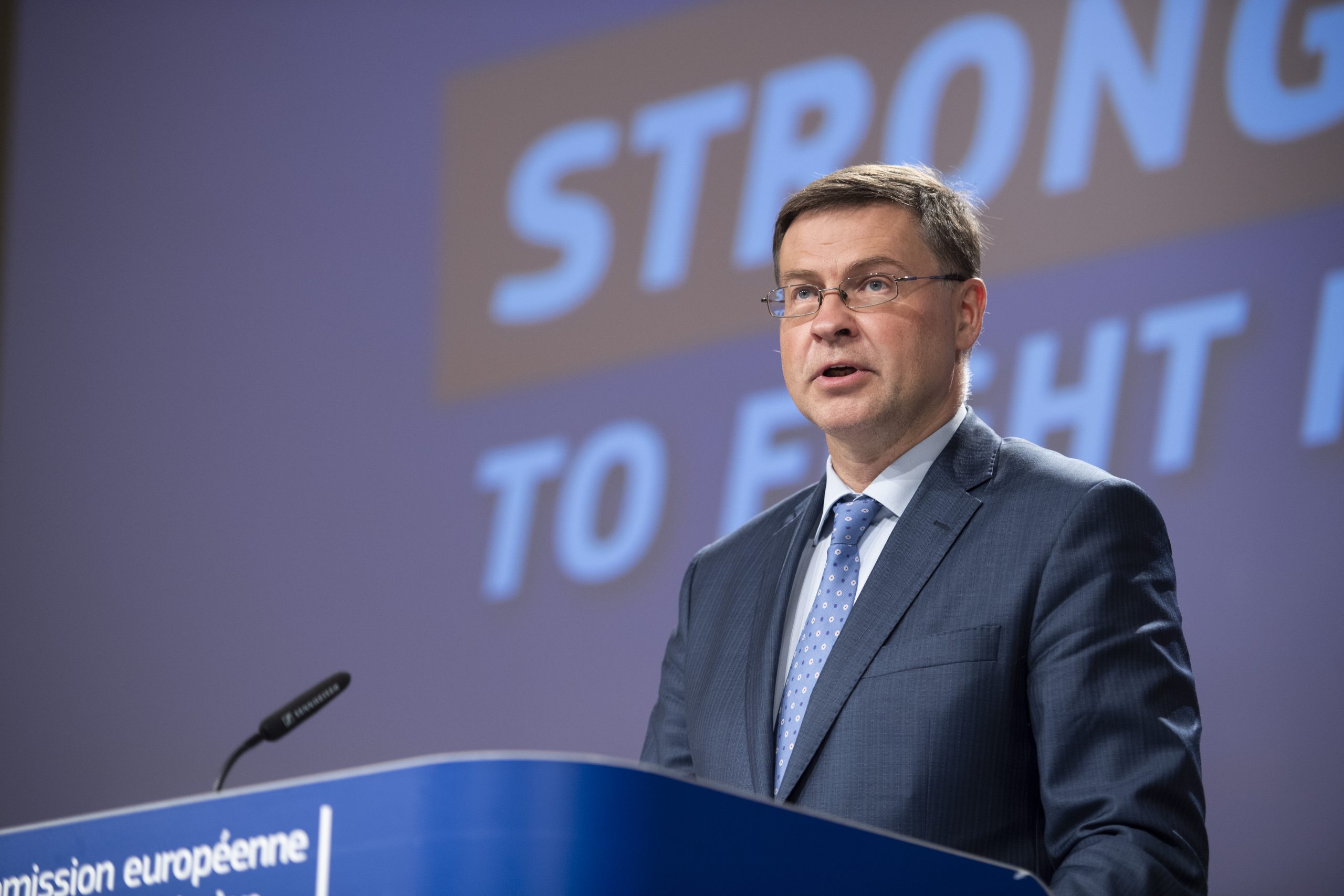Remarks by Executive Vice-President Dombrovskis on the updated approach to the fiscal policy response to the coronavirus pandemic
 ©European Union, 2021, Source: EC - Audiovisual Service
©European Union, 2021, Source: EC - Audiovisual Service“Check against delivery”
Good afternoon, ladies and gentlemen
Welcome to today’s College read-out.
Today in the College, we adopted a Communication which provides Member States with broad guidance on the conduct of fiscal policy for the period ahead.
Commissioner Gentiloni and I will elaborate on this point in a few minutes.
The College also adopted a new Strategy for the rights of persons with disabilities. My colleague, Commissioner Dalli, will be with you later to present this strategy.
We had a discussion on the European Pillar of Social Rights Action Plan that outlines concrete actions to further implement the principles of the European Pillar of Social Rights.
We have also discussed a Commission Recommendation on Effective Active Support to Employment, or EASE, which provides concrete guidance to Member States on policy measures to support a job-rich recovery.
Both files will be adopted by written procedure tomorrow morning, and Commissioner Nicolas Schmit and I will be here to present it to you.
Finally, the College discussed a proposal on pay transparency to ensure that women and men in the EU get equal pay for equal work. This too will be formally adopted tomorrow and my colleagues Vice-President Jourová and Commissioner Dalli will discuss it with you here.
And now, we can move on to our fiscal policy communication.
One year ago, the pandemic had just reached Europe.
EU countries urgently needed to do everything that they could to offset its economic impact. They needed maximum flexibility within EU fiscal rules for exceptional spending to finance healthcare response, to support their economies, preserve jobs and keep businesses afloat.
This was when the European Commission proposed activating the general escape clause of the Stability and Growth Pact. This was for the first time ever, and we also provided the full flexibility of state aid rules.
It was an unprecedented EU policy response, and a key part of our strategy to respond quickly, forcefully, and in a coordinated way to the pandemic.
That strategy has been successful.
Fiscal and liquidity measures are estimated to have cushioned the GDP contraction in 2020 by around 4.5 percentage points.
While the months ahead will still be difficult, there are now grounds for cautious optimism. Growth should resume in spring and gather momentum in the second half of the year as vaccination campaigns advance, pressure on health systems subsides and containment measures ease.
However, we still face a lot of uncertainty – not least with the development of the pandemic – and numerous risks.
As the situation evolves, this is the right moment to think to the future in terms of our coordinated fiscal policy response.
Today’s Communication provides a number of guiding elements for EU countries when they prepare their Stability and Convergence Programs in April.
The first of these relates to the general escape clause.
We propose that the decision on whether to continue or deactivate the clause should depend on an overall assessment of the state of the economy, using quantitative criteria.
The key criterion to use would be whether the level of economic activity in the EU or euro area exceeds the pre-crisis level of 2019.
Based on the preliminary indications of the Commission’s 2021 winter forecast, GDP should reach its 2019 level towards the middle of 2022. On this basis, the general escape clause remains active in 2022 and no longer in 2023.
We plan to take the final decision fin this regard in spring, also after consultations with Member States.
Today, we are also giving them early guidance for designing their fiscal policies in the period ahead.
Paolo will tell you more, but I would just like to highlight a few important elements.
First: fiscal policies need to remain supportive this year and next. Support needs to continue as long as needed and we should avoid its premature withdrawal.
Then: support measures should be timely, temporary and targeted. As we progress into the post-crisis phase, they should focus more on promoting a resilient and sustainable recovery.
In addition, we should keep a close eye on the composition and quality of public finances.
Next: national fiscal policies should take into account the impact of the Recovery and Resilience Facility. This funding will provide a substantial economic impulse in the years ahead.
RRF grants, for example, will make it possible to fund high-quality investment projects and cover the costs of reforms that raise productivity – and without causing higher deficits and debt.
Putting the national recovery and resilience plans into full and proper effect on the ground will raise potential growth – and also contribute significantly to improving fiscal sustainability.
We should not waste this unique opportunity.
Lastly: national fiscal policies will need to become gradually more differentiated in 2022.
EU countries with low sustainability risks should maintain a supportive policy, taking into account the impact of the RRF.
And those with high debt levels should pursue more prudent policies, using RRF grants to fund additional investment.
We all know that today’s fiscal support levels cannot remain in place forever. It would place an unacceptable burden on public finances in the longer term.
This is why Member States will – at the appropriate moment – need to refocus their budgets towards achieving prudent medium-term fiscal policies.
Here, I would like to stress that we will continue to take country-specific situations into account, also after the general escape clause is deactivated. The Stability and Growth Pact provides the necessary flexibility to support the recovery.
So what are the next steps?
In spring, we will propose country-specific recommendations, including some quantitative elements for medium-term guidance.
And once the recovery takes hold, we will relaunch the debate on the economic governance framework when we can factor in lessons learned during the crisis as well as the new circumstances.
